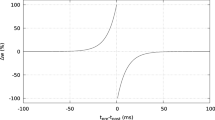Abstract.
Hebb's original postulate left two important issues unaddressed: (i) what is the effective time window between pre- and postsynaptic activity that will result in potentiation? and (ii) what is the learning rule that underlies decreases in synaptic strength? While research over the past 2 decades has addressed these questions, several studies within the past 5 years have shown that synapses undergo long-term depression (LTD) or long-term potentiation (LTP) depending on the order of activity in the pre- and postsynaptic cells. This process has been referred to as spike-timing dependent plasticity (STDP). Here we discuss the experimental data on STDP, and develop models of the mechanisms that may underlie it. Specifically, we examine whether the standard model of LTP and LTD in which high and low levels of Ca2+ produce LTP and LTD, respectively, can also account for STDP. We conclude that the standard model can account for a type of STDP in which, counterintuitively, LTD will be observed at some intervals in which the presynaptic cell fires before the postsynaptic cell. This form of STDP will also be sensitive to parameters such as the presence of an afterdepolarization following an action potential. Indeed, the sensitivity of this type of STDP to experimental parameters suggests that it may not play an important physiological role in vivo. We suggest that more robust forms of STDP, which do not exhibit LTD at pre–before–post intervals, are not accounted for by the standard model, and are likely to rely on a second coincidence detector in addition to the NMDA receptor.
Similar content being viewed by others
Author information
Authors and Affiliations
Additional information
Received: 28 January 2002 / Accepted: 6 May 2002
Acknowledgements. This research was supported by the EJLB foundation, the NIH, NSF, and the DOD (NDSEG Fellowship). We thank Carrie Marder for her comments on earlier versions of this manuscript.
Correspondence to: D.V. Buonomano (e-mail: dbuono@ucla.edu, Tel.: +1-310-7945009, Fax:+1-310-8252224)
Rights and permissions
About this article
Cite this article
Karmarkar, U., Najarian, M. & Buonomano, D. Mechanisms and significance of spike-timing dependent plasticity. Biol Cybern 87, 373–382 (2002). https://doi.org/10.1007/s00422-002-0351-0
Issue Date:
DOI: https://doi.org/10.1007/s00422-002-0351-0




